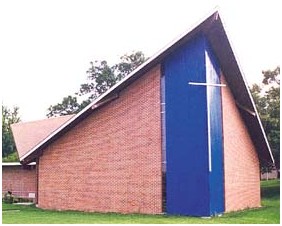Option 5: Blending by Absorption
The Definition of Blending by Absorption
Absorption occurs when a smaller church merges with a larger healthy congregation. The larger church absorbs or adopts the smaller church but doesn't change its name or its approach to ministry. For the smaller church this type of merger may be a positive alternative to closing. The members of the adopted church are able to continue to worship and fellowship with their friends. They can also see how their remaining resources strengthen the ministry of the larger church. The absorbed congregation can serve as the custodian of the smaller church's heritage and records and usually carries on some of the traditions of the smaller church.
Case Study: Holy Redeemer in Cedar Rapids, Iowa
In the fall of 1992 the leaders of Peace Lutheran Church in Cedar
Rapids realized
that the church could not sustain itself beyond the middle of 1993.
The Peace church council sent letters to the 3 closest ELCA churches to
inquire about their interest in merger. Peace wanted the merger to
take place before mid-1993, and it wanted its pastor to continue to
serve the blended church. Holy Redeemer was receptive to such a
merger, provided that its name and constitution would be retained.
Holy Redeemer agreed that Peace's pastor could become the associate
pastor of the blended church. The churches began worshiping together
on Palm Sunday in 1993 and legally merged after Peace's building was
sold that fall. The ministries and members blended easily, but for
various reasons the associate pastor's position was ended in late
1994. Holy Redeemer continues to be quite stable. Since 2000 its
worship attendance grew by about 2% in an area where the population
grew by 1%. For more information see the
Holy Redeemer
web site.
their interest in merger. Peace wanted the merger to
take place before mid-1993, and it wanted its pastor to continue to
serve the blended church. Holy Redeemer was receptive to such a
merger, provided that its name and constitution would be retained.
Holy Redeemer agreed that Peace's pastor could become the associate
pastor of the blended church. The churches began worshiping together
on Palm Sunday in 1993 and legally merged after Peace's building was
sold that fall. The ministries and members blended easily, but for
various reasons the associate pastor's position was ended in late
1994. Holy Redeemer continues to be quite stable. Since 2000 its
worship attendance grew by about 2% in an area where the population
grew by 1%. For more information see the
Holy Redeemer
web site.
Case Study: St. Mark’s Episcopal Church
In 2013 the members of Episcopal Church of the Holy Spirit in Erie,
PA decided to close and join with the nearby St. Mark’s Episcopal
Church. St. Mark’s was healthy and growing, and the addition of the
former St. Mark’s members added to that growth.
A Variation: Absorption into a 2-Campus Restart
Just over four years ago a small declining church contacted Shelter Rock Church in Manhasset, NY, a big healthy congregation about 20 minutes away. Shelter Rock took over the dying church as a second campus. Shelter Rock provided new staff and remodeled the building. The result was significant growth--even former members of the former church returned to the new vibrant congregation.
In Lincoln, Nebraska Prince of Peace Lutheran Church was stuck. While it wasn't declining, its 80 active members were aging and its options were limited. On the other side of town Sheridan Lutheran Church was bursting at the seams with 1,500 at worship. In July, 2008 the two congregations merged in order to form a new satellite congregation, Spirit of Hope, in a nearby shopping center. See this article from the Lincoln Journal Star to read the whole story.
Track Record of Absorption
The charts on the Continuation Merger page show that absorptions have a stronger track record than either of the other types of mergers. It should be noted, however, that there aren't many examples of blending by absorption among mainline churches, so the chart is based on a sample of only four churches. Absorptions are more common in evangelical churches, which generally use the term "adoption" instead of "absorption".